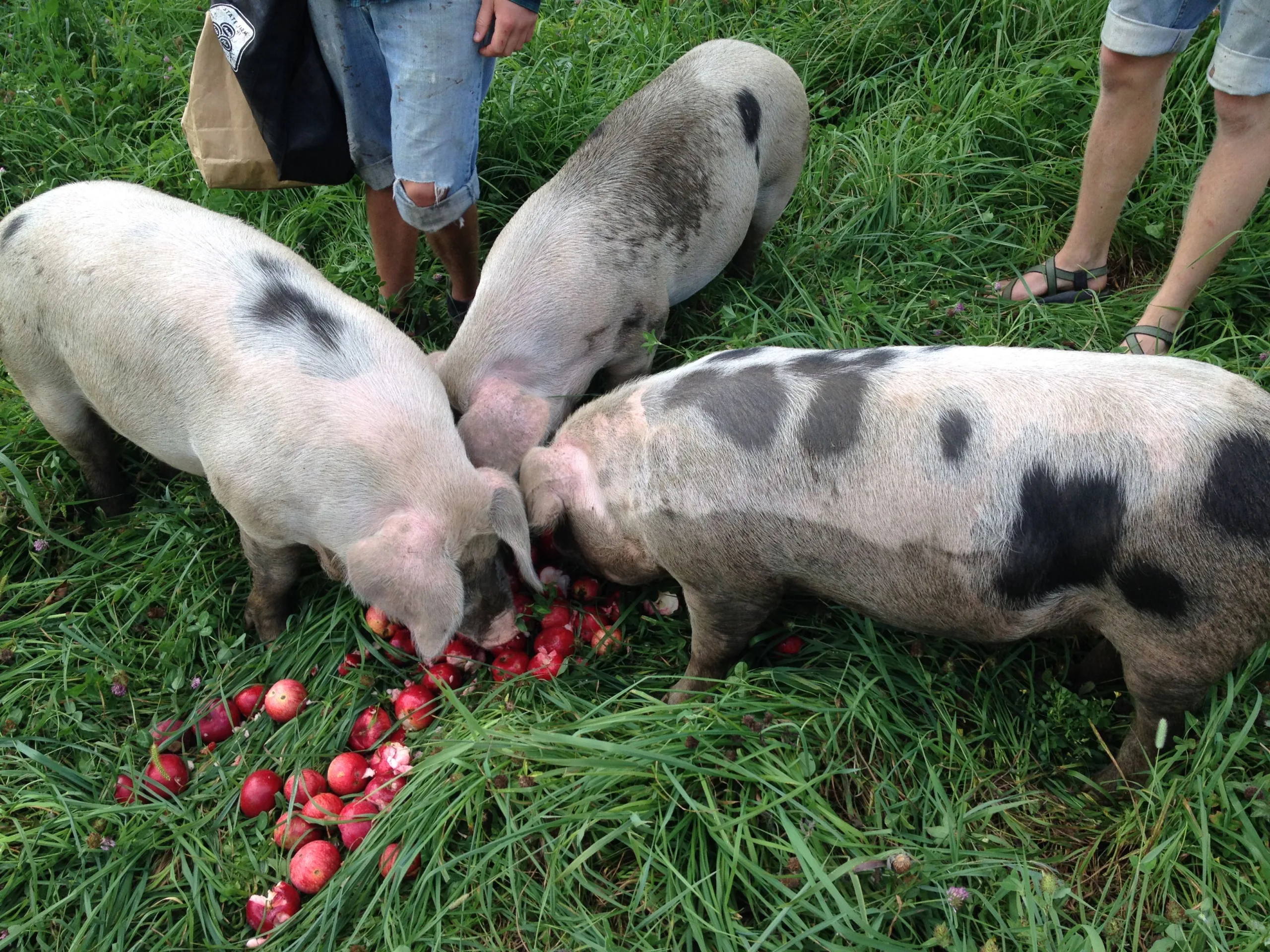Last year, as one of our early pastured meat experiments, we raised four Gloucestershire Old Spot pigs from Hidden Nest Farm in Argyle, New York.
As we strive to provide any animal we bring onto this farm with a full, safe, and interesting life, we circled a 1.5 acre hillside—complete with an old horse stall, trees, grass, and a stream—with a one-foot high electrified fence. (We also chose the spot we did because we hoped that the pigs would do some work of clearing away the underbrush that make access to the aging trees impossible.)
We were HIGHLY skeptical about the ability of a one-foot high fence to contain four fully-grown pigs. But, because we read the tip in Living with Pigs by Chuck Wooster—our good friend at Sunrise Farm—we decided to swallow our pride and give it a try. To our delight, it was perfect. (Well…except once. We did find one pig in our vegetable garden one day. But, to be fair, she had been chased there by neighborhood dogs.) But, I’d do it again in a minute.
I miss the pigs. They were fun to have on the farm. Harvest day was quite difficult and emotional for all of us here…and that certainly plays a role in our decision to forego raising pigs again this year. However, our main reason to skip pigs this year is that we want to focus on poultry.
Raising pastured poultry is so perfectly restorative that it makes too much sense not to do it. Pigs, when grouped and confined (at all) are destructive. They’re big animals and they’re meant to roam. The combined weight of the parcel of hogs moving about on any single parcel of land is, over time, detrimental.
If we choose to raise pigs again in the future, we will do so in the forests we have here on the farm. Our plan is to set up a few dozen half-acre paddocks in the trees, through which we can rotate the pigs. That way the pigs can disturb the forest floor, eat the mushrooms, bugs, and low-plant life, fertilize and move on—the way they would as wild animals. That’d be the restorative way to do it—good for the pigs, good for the forest—but it’d require more infrastructure and equipment than we have at the moment. (A good tutorial for this method is Salatin’s Pigs ‘n Glens video.)
So, for the moment, poultry it is!
But, here’s quick photo album of the year the four pigs—Spot, Blackie, Big Fatty, and Spaz—were with us.














